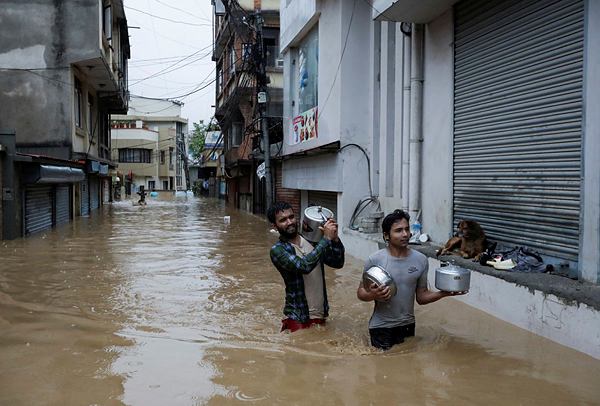Continuous rainfall has led to severe flooding in Nepal’s capital, Kathmandu, killing at least 32 people, with another 12 reported missing, police said on Saturday. The torrential downpours, which began on Friday night, are expected to persist through the weekend. Authorities have rescued 1,053 people across the city, while 17 have been injured.
The government had previously issued flood warnings for the country, anticipating heavy rainfall. In response, nighttime bus travel was banned on highways, and cars were advised to stay off the roads. Security forces were placed on high alert as reports of landslides and flooding emerged from other regions of Nepal.
The monsoon season, which brings heavy rain to the area, starts in June and typically ends by mid-September. However, this year’s monsoon has extended due to a delayed retreat, bringing torrential rains across South Asia.
Most rivers in Nepal have swollen, with many overflowing onto roads and bridges. Police are working to clear debris and reopen highways that have been blocked by landslides at 28 locations, said police spokesperson Dan Bahadur Karki.
Weather officials predict the rains will ease by Sunday. “Heavy rains are likely to continue until Sunday morning, and conditions should clear afterwards,” said Binu Maharjan, a weather forecasting official.
Parts of central and eastern Nepal have been hit hardest, receiving between 50 mm (2 inches) and 200 mm (8 inches) of rain. Although international flights remain unaffected, many domestic flights have been disrupted, according to Rinji Sherpa, a spokesperson for Kathmandu Airport.
Floodwaters have inundated roads and homes throughout the capital after rivers overflowed from more than 200 mm (8 inches) of rainfall. The Koshi River in southeastern Nepal, which often causes deadly floods in India’s neighbouring state of Bihar, is flowing well above the danger level at 450,000 cusecs, significantly higher than its usual 150,000 cusecs, according to local officials.
The river level continues to rise, warned Ram Chandra Tiwari, the top bureaucrat in the region. A cusec is a measure of water flow equal to one cubic foot per second.
(With media inputs)

